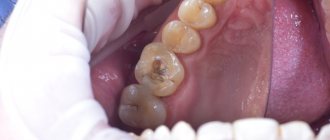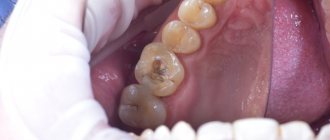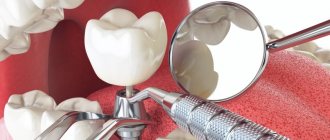Take care of your health - get dental treatment at President Dentistry! The specialists of our dental complex guarantee the effectiveness and safety of procedures. Make an appointment by phone.
Dental treatment involves a number of different dental procedures. They are aimed at restoring damaged tissues and maintaining healthy ones. It is highly recommended to visit the dentist once every six months. If you want to undergo dental treatment in Moscow, a smart solution would be to use. Our dentists are highly qualified and have modern equipment. This allows you to effectively fight even the most serious diseases.
Are there people who have no dental problems at all?
In our time, most likely not: sooner or later, every person is faced with the need to treat gums, teeth or roots. Poor ecology, poor-quality water, a variety of tasty but harmful food for teeth lead to the development of dental diseases, and then people begin to look for ways to painlessly treat front and back teeth.
What affects dental health?
First of all, dental health depends on heredity. However, even the strongest teeth by nature can quickly be damaged by careless treatment, and then treatment of the roots of the teeth or restoration of the crowns will be required. A balanced diet rich in minerals promotes successful regeneration of dental tissue, and careful oral hygiene helps get rid of microorganisms that cause caries. Regular dental checkups will help you maintain your oral health, because if a problem is detected early, you won’t have to worry about the high cost of dental treatment.
Caries is the most common dental disease
Caries is a pathological process that affects tooth enamel and dentin. Dental plaque is a fertile environment for the life of bacteria that produce organic acids. This leads to destruction of dental tissue. To avoid serious problems, it is necessary to undergo timely treatment.
Among the common causes of caries formation are the following:
- poor oral hygiene;
- non-compliance with the principle of proper nutrition;
- disturbed microflora of the oral cavity;
- hereditary predisposition and systemic diseases;
- mechanical damage to dental tissues;
- negative impact of external factors (taking medications, unfavorable environment).
The symptoms of the disease are varied. In the early stages, the patient may notice small spots on the enamel. If the caries is deep, sensitivity increases. This stage is also accompanied by painful sensations.
The choice of treatment method depends on the stage of the disease. If the stage is early, only the surface layer of enamel is damaged. This is a reversible process that requires restoration and strengthening of the enamel. For this purpose, medications that contain calcium, phosphorus, and fluorine are used. If the caries is medium or deep, it is necessary to remove the affected tissue and then perform a filling.
What are the types of dental diseases?
The most common dental disease is caries. Most patients come for dental treatment for this reason. If it is not eliminated in time, even more serious diseases may develop, for example, pulpitis or periodontitis. There are also non-carious lesions (erosion, wedge-shaped defect, fluorosis, etc.), fraught with changes in the color and shape of the teeth. Such diseases usually require complex dental treatment.
Features of caries treatment at Amazing Price Dentistry:
- painlessness of all procedures
- treatment with minimally invasive methods,
- Filling materials of the highest quality, selected to meet individual needs and guarantee perfect color matching and durability
- restoration of broken and damaged teeth
- treatment of caries after dental trauma.
Bacteria in the mouth can cause tooth decay and many other diseases such as gingivitis, bad breath, heart disease, kidney disease, eye disease, joint disease and more. This is why treating dental decay is so important and important not only for maintaining a beautiful and healthy smile, but also for maintaining the health of your entire body.
The key to maintaining oral health is early detection of the disease and prevention of its development. Therefore, it is extremely important to regularly visit the dentist’s office. Modern instruments and extensive experience of dental therapists help us diagnose caries and the condition of teeth.
Is it painful to treat teeth?
Today you can not be afraid to treat your teeth. In modern therapeutic dentistry, all manipulations are carried out using anesthesia, so the treatment of gums, teeth, and roots takes place without pain. The latest generation of anesthetics are non-toxic, safe for health and very effective. No need to worry: these drugs will provide painless treatment even for the front teeth, which are highly sensitive.
How is caries treated?
Treatment of caries consists of removing damaged tissue from the tooth and restoring its shape using filling materials. When caries is detected at the initial stage (at the spot stage), a remineralization procedure is performed to treat it - enriching the tooth enamel with minerals allows you to restore its density and eliminate small carious lesions. If the diseased tooth is not treated, caries will develop into pulpitis.
How are pulpitis and periodontitis treated?
Dental treatment for pulpitis begins with cleaning the carious cavity. Next, the roots are treated: the pulp and all nerve endings are removed, then antibacterial treatment and canal filling are carried out, and the anatomical shape of the tooth is restored. Periodontitis requires sanitation of the source of infection, root canal cleaning and anti-inflammatory therapy. These diseases are usually accompanied by intense pain and therefore require urgent dental treatment. Otherwise, there is a risk of the inflammatory process turning into a protracted chronic form, which can cause even greater harm to the body.
Types of services
Filling happens:
- Planned (a person plans a visit to the dentist to install a filling).
- Emergency (due to acute pain, a person goes to the dentist and a filling is urgently performed there).
The filling can be:
- Temporary (it is installed for therapeutic and diagnostic purposes for 4-21 days).
- Permanent (installed with the expectation of long-term service).
Depending on the severity of the damage, treatment with the installation of a filling is:
- Fast (in one procedure).
- Multi-stage (used when working with dental canals).
Depending on the material, fillings are made from:
- Metal.
- Cement.
- Composite.
- Photopolymer.
- Ceramics.
According to the method of hardening, fillings are:
- Chemically cured.
- Light.
According to the place of application, fillings are divided into the following:
- Which are installed when filling canals.
- Which are created for the coronal part.
Depending on the place of provision, the service is:
- In a government hospital.
- In a private dental center.
Dental treatment in Moscow
The Doka-Dent network of clinics provides paid dental treatment using high-quality equipment and the latest generation dental materials. Patients often come to us at an advanced stage of the disease, when not only their chewing teeth are destroyed, but also their front teeth, which cannot be hidden when talking or smiling. Treatment of front teeth requires a special approach, because it is necessary not only to completely restore their functionality, but also to restore their aesthetic appearance. Our specialists cope brilliantly with such a complex and responsible process. Therefore, every patient who wants to have their teeth treated in our clinics can rest assured of an impeccable result.
Approximate prices
In Russian dental clinics, filling a tooth costs approximately 150-2000 rubles.
Approximate prices for temporary fillings depending on the material:
- From zinc sulfate cement - from 150 rubles .
- From dentin paste - from 200 rubles .
- From Vinoxol - about 400 .
- From zinc-eugenol cement - from 120 rubles .
- From polycarboxylate cement - about 300 .
Estimated cost of permanent fillings depending on the material of manufacture:
- Metal - from 500 rubles .
- From a light-curing composite - from 700 to 1800 .
- From glass ionomer cement - from 1000 to 1900 rubles .
- From nanocomposite - about 2 5 00 rubles .
How much does it cost to cure a tooth?
Dental treatment in Moscow can cost different amounts. To the question “how much does it cost to cure a tooth?” It is not easy to answer in advance, since much depends on the type and stage of the disease, the complexity of the case, the amount of work to be done, the materials used and other factors. Therefore, the dentist will make an exact calculation after a consultation based on the results of the diagnosis. Before stating how much it costs to treat a tooth, the dentist must do the following:
- conduct a consultation and examination; prescribe radiographic diagnostics;
- plan the treatment process;
- decide on the advisability of using anesthesia.
After a complete diagnosis, it will be clear how much regular or complex dental treatment will cost the patient in a particular situation.
If the disease is detected at an early stage, then, in principle, fairly inexpensive treatment is still possible; dental inflammation and other complications will require large expenses. You can find out how much dental treatment costs at Doka-Dent dentistry on this page of the website (prices are approximate). It should be borne in mind that in any case, even the most expensive treatment of complex teeth is the most profitable option compared to prosthetics in case of their loss.
Types of periostitis
Depending on the causes of periostitis, there are the following types:
- Infectious - occurs directly due to poorly treated teeth and inflammatory processes in the oral cavity;
- Traumatic - associated with a fracture or constant load on the tooth (for example, due to an incorrectly placed filling);
- Toxic - caused by infection entering the periodontium from other parts of the body (for example, tuberculosis) through the blood.
The form of flux can be acute or chronic.
- Acute serous periostitis usually occurs due to trauma. In this case, the inflammatory process does not last long, although it can turn into an ossifying form (with the proliferation of bone tissue).
- Acute purulent periostitis is a classic gumboil with throbbing toothache that can spread to the entire side of the face and is aggravated by heat. At the same time, due to inflammation, body temperature often rises. This type of disease can occur due to serious injuries, but usually it is associated with complications of dental diseases.
- Acute diffuse periostitis - accompanied by a rise in temperature to 38 degrees, weakness and lack of appetite. The periodontal infection itself spreads in all directions, without any specific focus. In this case, hospitalization, surgery and complex antibacterial therapy may be necessary.
- Chronic periostitis is quite rare. This is a sluggish inflammatory process of the periodontium, which has almost no effect on facial features, but causes redness and swelling of the oral mucosa. Most often it occurs in patients weakened by other diseases and can develop for years, occasionally making itself felt with exacerbations.










